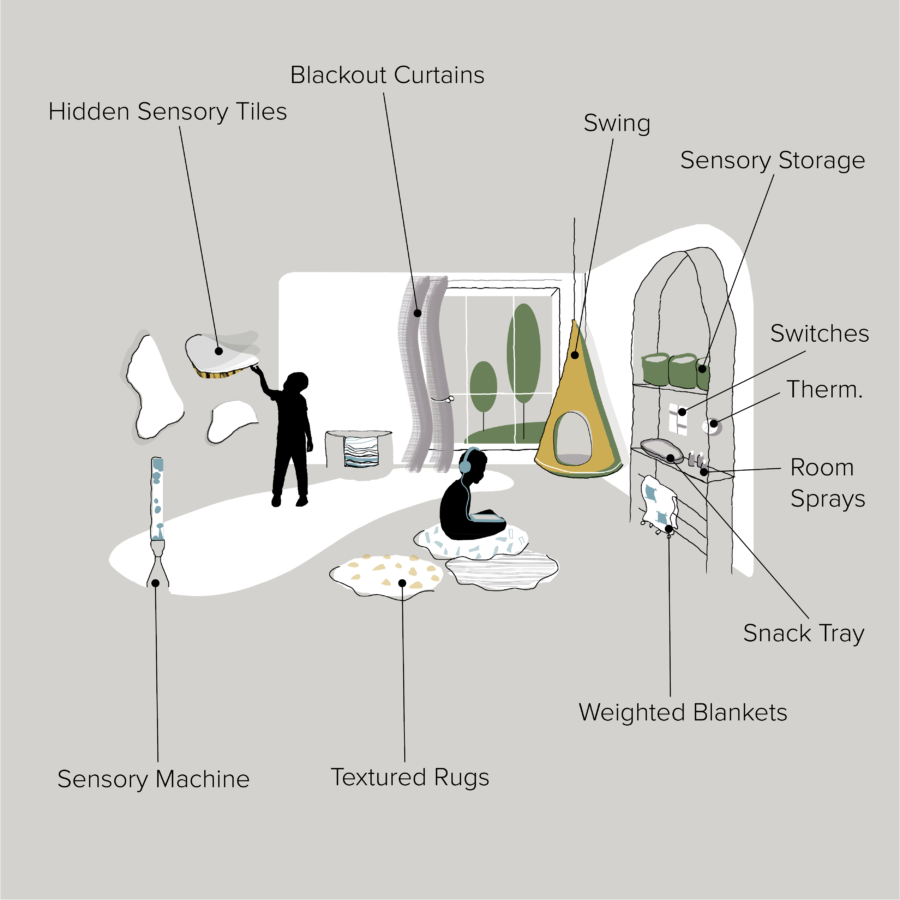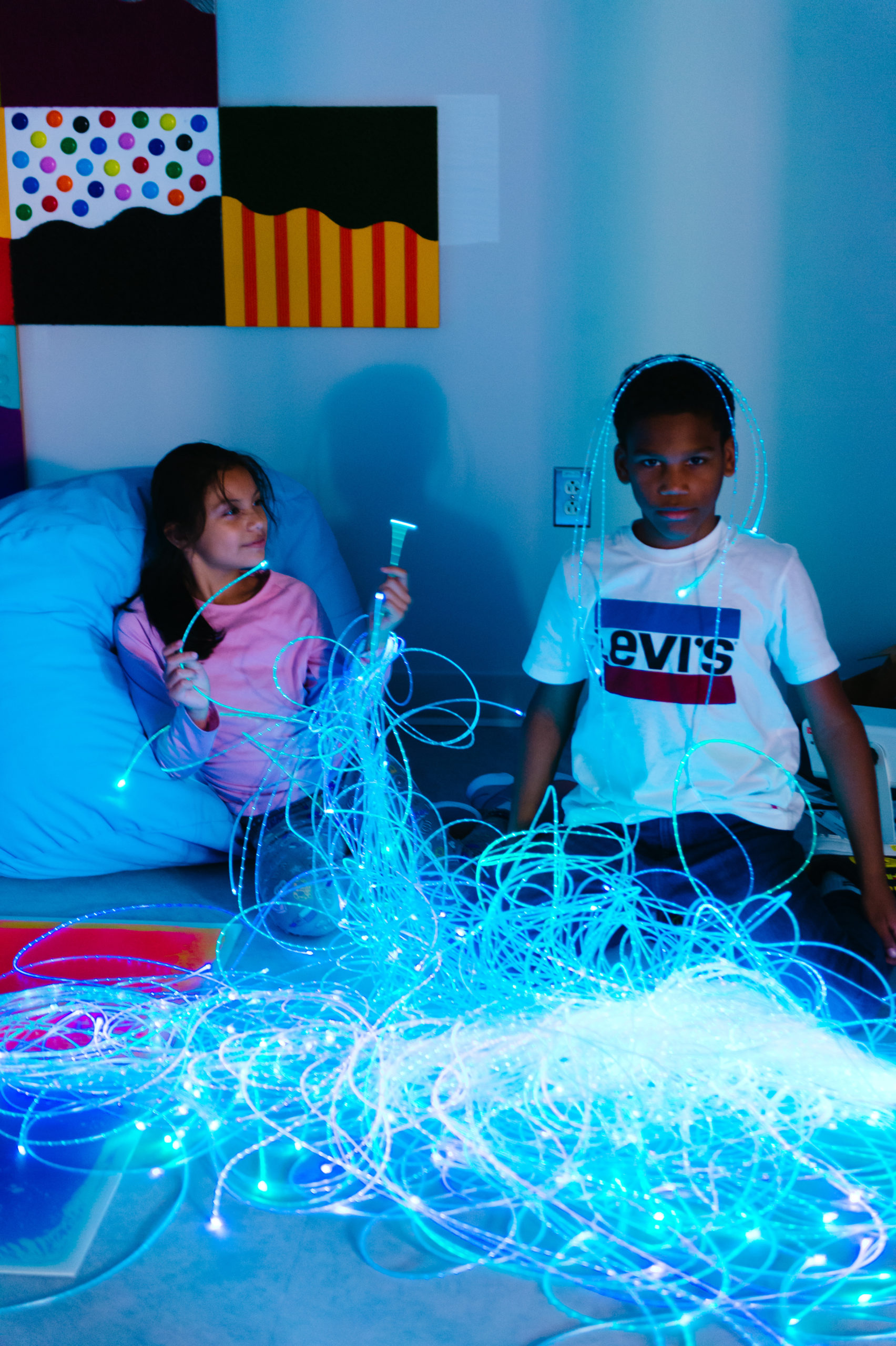
Sensory Control
Sensory Control
Problem
Some learners, especially those with sensory processing disorders, including autism, experience negative reactions to spaces with conflicting or overwhelming sensory stimuli, often causing them to become distracted or upset. Examples include bright or contrasting lighting, the hum of mechanical systems, or overwhelming patterns or textures. How might we design an environment to help learners positively regulate sensory information and/or de-escalate sensory overload?
Solution
A sensory control space is intentionally designed to provide a controlled and predictable stimulus that includes but is not limited to access to tactile displays, dimmable lights, colors, textures, and bold patterns. The space encourages tactile interaction and non-restrictive movement, especially soothing motions, like back-and-forth, side-to-side, or up-and-down. Most importantly, the sensory room gives the learner a predictable place where they have the freedom to choose to engage (or not engage) with the stimuli, giving them control over their environment.
Related Patterns Small Group Rooms, Cocoon Space, Calming Retreat, Multiple Intelligences
View Image Gallery








Learn More
- How to Design a Home for Individuals with ASD
Research suggests that minor changes to sensory inputs in the home can reinforce positive behaviors and create a safe oasis for people with autism. However, no two autism diagnoses are the same and each person has different sensitivities and symptoms, which is why designing an autism-friendly home can be challenging.
- How People With Special Needs Can Benefit From Sensory Rooms
This article provides in-depth information regarding what a sensory room is, its benefits, and how to create one.
- How to Create an Autism-Friendly Environment
This article provides a helpful list of questions/prompts to guide you as you design a sensory space.


